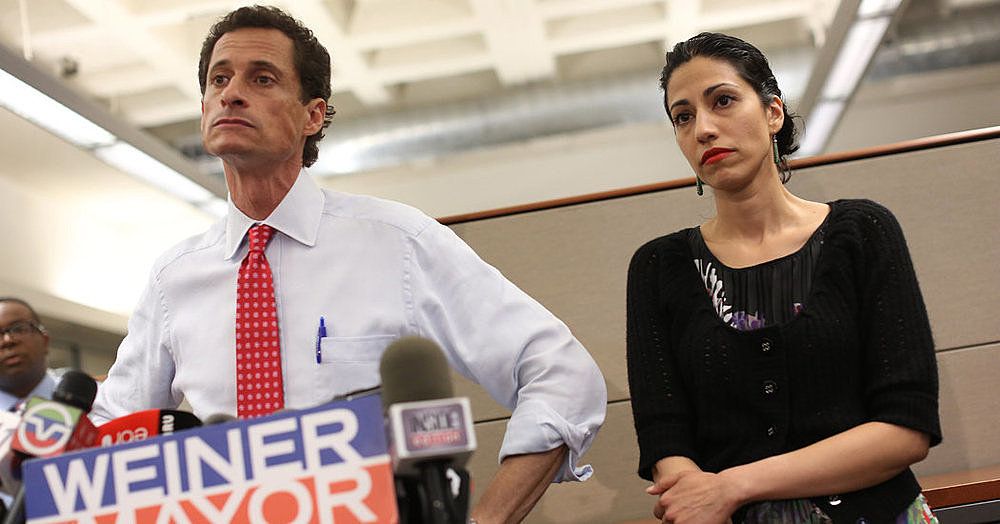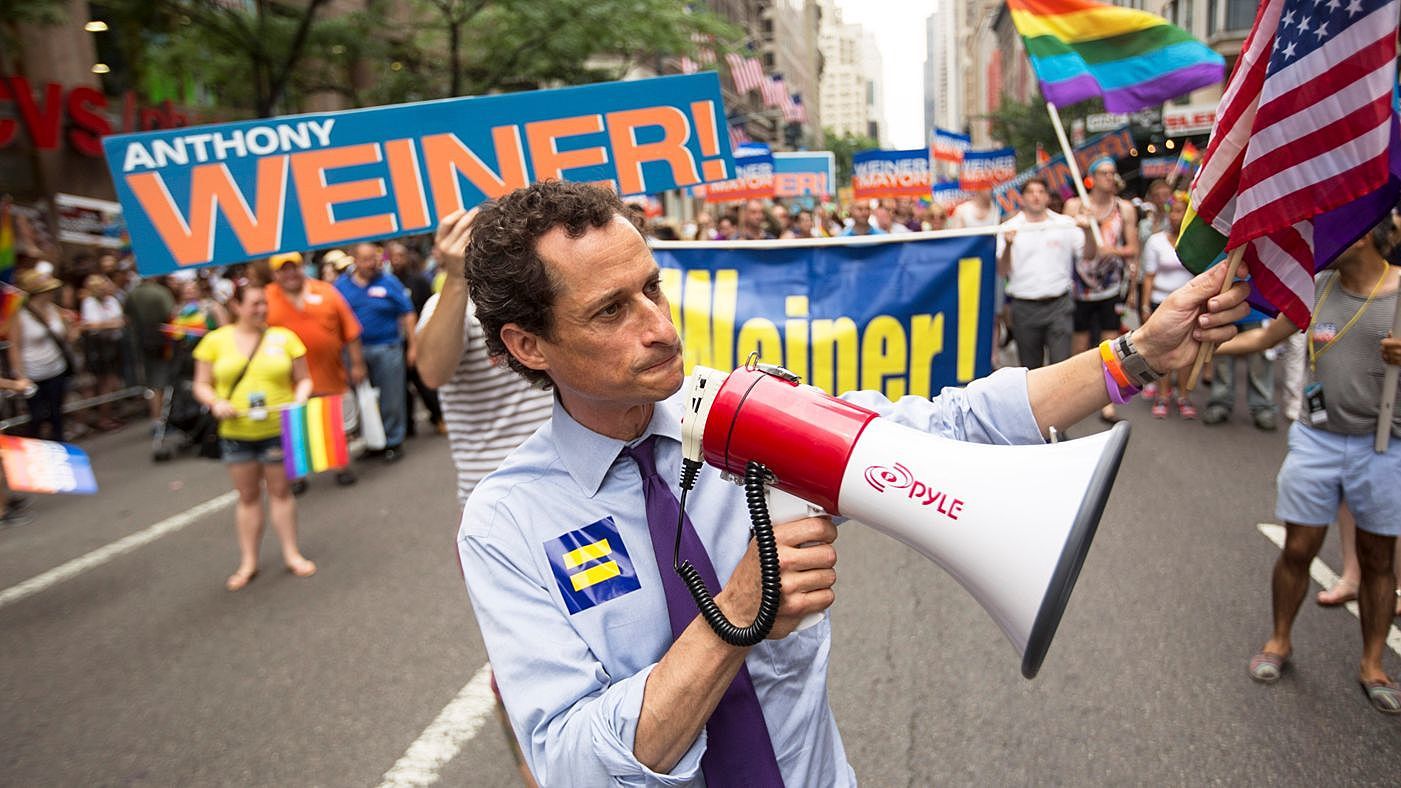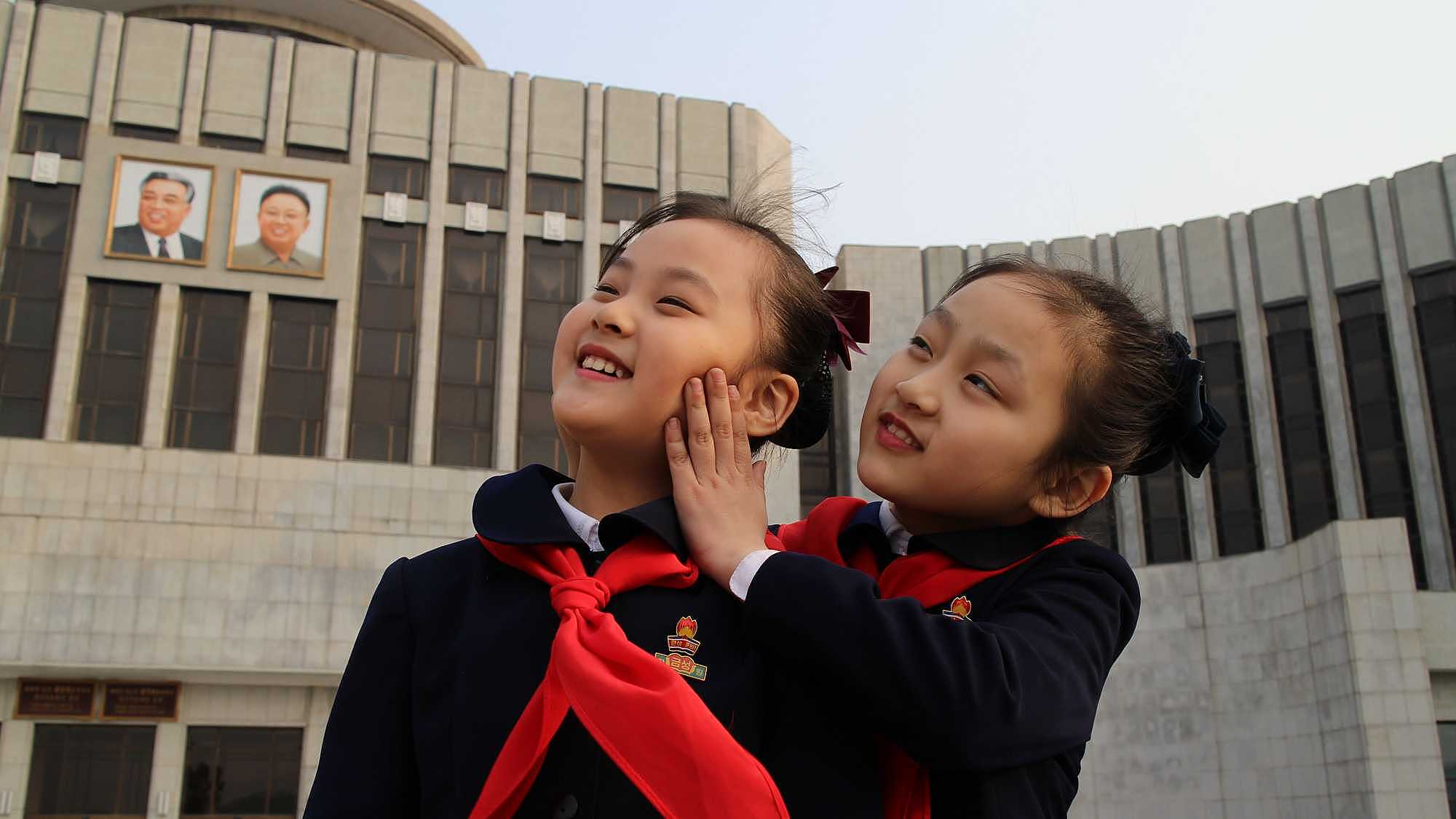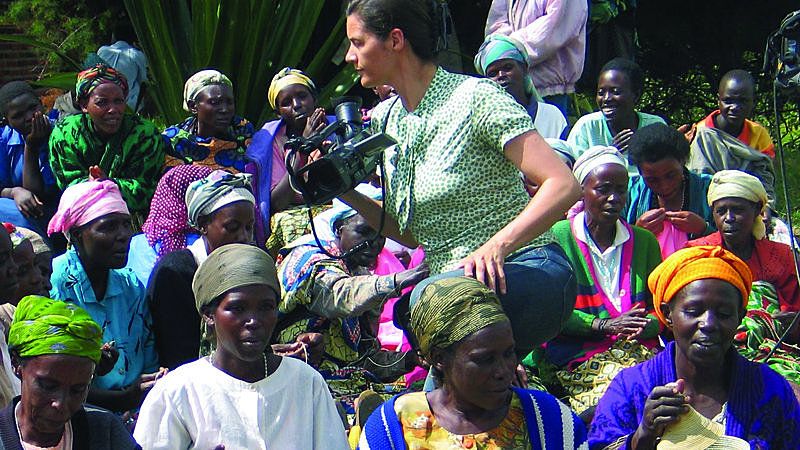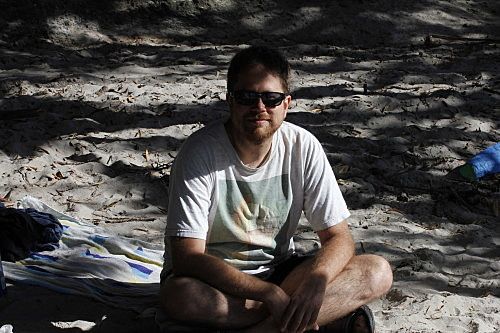Do You Want Documentary Or Do You Want The Truth?
Doug Dillaman on four convention-busting NZIFF documentaries.
Debates over how well documentaries capture 'the truth' ignore the material reality of their creators and their society. Taking in four very different films from this year's NZIFF, Doug Dillaman discovers there's much more interesting choices at work than the fact-checking.
There are documentaries, and then there’s the truth. The relationship between the two is always a torturous one. From the very first English-language feature-length documentary, 1922’s Nanook of the North[1], documentaries have taken a form meant to imply that they communicate the truth, even while perpetuating falsehoods. Today, almost a hundred years and countless hours of documentary film and reality television later, we’re far more informed and cynical viewers, likely to watch The Bachelor and its scathing tell-all counterpart UnREAL back to back. And yet, it’s as if some atavistic dividing line still persists in our heads: documentaries are non-fiction, dramas are fiction, and therefore one is real and one is made up.
A more nuanced (if still simplistic) viewpoint posits that documentaries occupy a continuum of “trueness”. On one side, you have observational films, or Jean Rouch’s cinéma vérité movement, or the films of Frederick Wiseman, whose finely observed documentaries could fit into these categories even though he hates Rouch’s turn of phrase – “a pompous French term that has absolutely no meaning as far as I'm concerned.” (His latest film, In Jackson Heights, is featured in this year’s festival programme.)
Regardless of Wiseman’s venom, the formal affinities to cinéma vérité cannot be denied: his films have no voice over, no sitdown interviews, no re-creations for the camera. They posit the filmmaker as an invisible presence that captures reality without manipulation. The other side of the continuum are those documentaries that make no attempt to “capture” reality but re-create it to suit the filmmaker’s own ends, whether it’s asking a person to make a cup of tea, look pensively into the distance, or pretend that a woman is his wife. (Nanook of the North strikes again!) Such films might also use voiceover, and are more likely to rely on heavy editing and non-diegetic music to manipulate the viewer’s reactions.
At first glance, this seems like a reasonably reliable truth-o-meter: on one side there’s the stuff that really happened, on the other side the stuff that gets made up. There’s a major wrinkle here, however: documentaries are not just receptacles for bits of truth that get dumped wholesale on an audience. Instead, they carry a narrative, a lens through which everything in the film is understood. And if no narrative is explicit, we look for one. A cinéma vérité film may be the truth, but it’s not the whole truth: its makers chose what to leave out of the frame, what to leave out of the edit, and what order to put its shots in for a reason. Even with the best of intentions, these decisions can never wholly be free of bias.
Conversely, true footage by itself can fail to communicate reality. As an editor, I once worked on a documentary where the subject had behaved abominably, and the director wanted to show this rather than sugar-coat things. Inevitably, no matter how we edited it, the overwhelming impression was that we as documentarians were manipulating the situation to make said subject look bad. Even including it with the most minimal cuts seemed to make us the bad guys; we knew that even a charitable viewer would assume we’d only included the moment to juice things up, a one-time regrettable on-camera lapse that served our narrative. (This much is true; though there was only one time on camera said terrible behavior was documented, first-hand reports indicated there was much, much more.)
This creates a double bind for the critical viewer: a well-constructed narrative in a documentary situation can feel real, even when its manipulations are apparent via heavy editing and music usage. But if it’s the job of the documentary maker to make their film feel real, does that mean, it's innately untrustworthy?
One way to calibrate your answer to this question is to watch Weiner, although a better reason to watch it is because it’s a lightning-paced morality tale that’s jawdroppingly captivating. Directors Josh Kriegman and Elyse Steinberg came into disgraced ex-U.S. Congressman Anthony Weiner’s life as he prepared to rehabilitate his image (tarnished by a sexting scandal) by running for mayor of New York City. Through montages and finely diced sequences of fundraising, we always feel the filmmaking process close at hand. And yet, despite this obvious intervention, there feels in every sequence the sense that something true has been captured, that editing has not been used to obscure the truth but to distill it.
The complicating fact is, of course, that the person that they are trying to portray with truth is a liar. Politics is a home for non-fiction performers, actors who play a character on the stage of the world. There are always varying degrees of closeness to their own self, but inevitably, much of their public persona is rehearsed (Robert Greene, director of Kate Plays Christine which also appears at this year’s festival, has written eloquently on this topic in regard to Donald Trump.) Weiner is a liar in the sense that all actors are liars when performing, but it's a more specific act of betrayal that sends his thriving candidacy into sudden free-fall, and one that would cause more sensible people to send the cameras packing.
The former member for the 9th Congressional District, as it should be clear from this side of the campaign, is not a sensible person. As portrayed here, though, he’s far more than a punch line, refusing to throw in the towel either because he believes in rehabilitating his image for his family good or believes in the good he can do with his policies, or perhaps both. He may send the camera out of the room for a brief chat with his wife (Huma Abedin, herself a much more opaque but seemingly tragic figure, despite her high-profile connections to Hillary Clinton), but it’s back the next day.
Interestingly, directors Kriegman and Steinberg call themselves vérité directors, even though we see sit-down interviews and hear questions asked on camera. At one late point, after an indelicate question on a stressful day, Weiner asks what kind of fly on the wall they think they’re being. It’s a valid point – and yet, with its inclusion, the film only feels more genuine as a document.
At the complete opposite end from vérité – an end perhaps never dreamed of by most documentary makers – is Vitaly Mansky’s attempt to portray North Korea, Under the Sun. Even viewers who haven’t seen previous North Korean documentaries such as Mads Brügger’s The Red Chapel or Daniel Gordon’s A State of Mind will know of the near-totalitarian grip that North Korea has on its citizenry, and by extension, those who choose to shoot there.
After being given a script to shoot (featuring young Zin-Mi, an exemplary girl who is preparing to enter the children’s union) and handlers to direct their chosen subject, Mansky realised he would have no conventional freedom to depict what he saw. Instead, he made an unconventional choice: to put to use that which was captured, yet never intended for use, as his principal tool for revealing reality. As the film progresses, the multiple takes that our documentary performers use to sing the virtues of kimchee and factory efficiency are repeated, punctuated by scenes of the government-appointed directors encouraging them to increase their cheer.
Mansky’s filmmaking also makes room for other techniques that help demythologise the DPRK. Re-enacted scenes are graded with an unnaturally beautiful glow, like a perfume ad, while other scenes are rendered in a flat, banal color palette. Whereas A State of Mind chooses to emphasize the spectacle in North Korea’s pageantry, Mansky undermines the pageantry with his shot choices and music choices, ending the festivities early and using either no music or sad music where celebratory music would have been expected.
Documentary scenes of what children are taught in school are extended far beyond their natural point of interest, to capture the crushing boredom in the sheer repetition of trivial and undoubtedly false anecdotes of what Kim Jong-Il called the Japanese and landowners. Text on screen warns us when the scene we are about to watch depicts something that is completely untrue.
Despite its attempts to portray a truth, I’d argue that Under the Sun perpetuates a lie, albeit a subtle and minor one – that intervention behind (or in front of) the camera is unique to North Korean propaganda films. Under dictatorship or democracy, every camera choice that gets made is itself an intervention and a distortion. For those in the market for a film that thoroughly explores this – or, alternately, for those looking for what’s likely to be the best documentary of NZIFF – look no further than Kirsten Johnson’s Cameraperson.
Kirsten Johnson is a documentary camerawoman with 25 years experience (more famous titles include Fahrenheit 9/11, Derrida, The Invisible War, and Citizenfour), and after her directorial debut in Afghanistan fell apart due to a subject withdrawing her permission, she picked over images from past works that had been left behind but stuck with her. An opening text card asks us to see the film as memoir, a collection of “images that have marked me and leave me wondering still”. It’s a humble introduction, one that might lead one to expect an intriguing but forgettable scrapbook, and one that thoroughly undersells the depth of thought in its construction.
This intent is clear – albeit only in retrospect – from its initial scene. We join Johnson behind the camera in Bosnia, talking to herself about the beautiful wildflowers she’s filming, only to be interrupted by a charming shepherd on horseback. It’s documentary gold, and we fill in the gaps as she cuts to another shot in front of the shepherd, diligently assembling a visual sequence, moving vegetation for an ideal shot. It isn’t until about halfway through the film that her purpose for being in Bosnia – to cover a much darker, sadder story – is revealed, and with them, the choice of that scene as opening takes on a more self-lacerating twist.
Her critique isn't confined to herself, though. Fahrenheit 9/11 director Michael Moore’s brief appearance in the film comes in front of the US Capitol, interviewing a soldier who has chosen not to return to war. The interview is typical Michael Moore – asking questions he already knows, offering dubious statements of support – but free of Moore’s editorial control, it loses the self-aggrandising sense that Moore’s worst tendencies bring out, and instead focuses on the sheer sadness of the soldier as he realizes the desperation of his choice. Freed from its propagandistic roots, it’s a scene that feels more emotionally true than anything in any of Moore’s films, a reminder that documentary can be more persuasive when it is not overwhelmed with the intent to persuade.
What makes Cameraperson so rewarding is how it functions both on an emotional level – allowing us to understand Johnson through the presences and absences in her recorded material (we see her mother and father, and her twins, but never a partner of her own) – and on an intellectual level. One particularly apt juxtaposition follows a one-minute lecture regarding Syria on the perils of using images of the dead with a return to a Jasper, Texas courtroom, where we are confronted with a director asking to document pictures of a dead man. It’s juxtapositions like this that put us in Johnson’s shoes, understanding the ethics at play at every moment, but not forcing the film into a dry essay on these topics.
It’s worth briefly noting that Werner Herzog also addresses the depiction of the dead in his inimitably idiosyncratic Lo and Behold: Reveries of the Connected World. Herzog has long spoken of the distinction between the “bookkeeper’s truth” and the “ecstatic truth” and his preference for the latter: freely inventing a monologue for Dieter Dengler to speak in front of a jellyfish in Little Dieter Needs To Fly, narrating the Kuwait oil fires from the perspective of an alien in Lessons of Darkness, or casting Brad Dourif as an alien in the otherwise documentary Wild Blue Yonder. Lo and Behold is an entertaining random walk through Internet-related topics that interest Herzog (and/or his producers NetScout), and will not be remembered for containing any particularly wild inventions, but his choice to depict a dead young woman not by pictures but by the room she loved was both a quintessentially Herzogian choice and one that resonated unexpectedly with Cameraperson.
Werner Herzog, incidentally, famously throws away his unused footage rather than saving it for deleted scenes, saying a wood carver does not keep his shavings. Seeing Cameraperson proves that Herzog’s using the wrong analogy – this is no mere box of shavings, but a majestic mosaic.
What can drama learn from documentary? The main influence that it’s had is in the structural conventions. Explicit “mockumentaries” like The Blair Witch Project, What We Do In The Shadows, and The Office ape documentary convention to create a frisson of reality within their fiction, while the embrace of hand-held camera by directors from the Dardennes Brothers to Paul Greengrass led to an entire generation of filmmakers who seem to believe that wobbly camerawork can make an otherwise dramatically contrived script feel “real” to the viewer. The most recent wave of “truthy” fictional technique is the long unbroken take, intended to make us feel that what we are watching is somehow more real because there are no edits, a technique that has gradually lost its potency as we come to understand the invisible digital stitchery that goes into the illusion of the unbroken take. All of these are techniques to make the fake seem real, with varying degrees of success, but what unifies them is that they are not interested in capturing the real.
A less frequently used tactic, but a richer one, is to merge the tools of dramatic film with documentary, thus depicting reality in a fictional framework. The result can be something less “true” than documentary, but possibly even more effective at capturing “reality”.
A few examples: Haskell Wexler’s Medium Cool (1969) put actors amidst real political turmoil during Chicago’s 1968 Democratic National Convention; Larry Clark’s Kids (1995) is one of many films to rely on non-actors and real locations to create a sense of verisimilitude (further enhanced by Harmony Korine’s screenplay), and the recently burgeoning genre of “hybrid” films like New Zealand director Alyx Duncan’s The Red House (2012) and this year’s NZIFF selection All These Sleepless Nights develop scenes with real people in an existing relationship that blur the lines of reality and fiction.
One extraordinary film on this year’s program that combines documentary and dramatic qualities to optimum effect is Free in Deed, filmed in Memphis’s crumbling hotels, housing projects, and basement churches. On the surface, there’s no question that, despite its roots in a tragic true story about faith healing, Free in Deed is a fictional drama; you might recognize lead actors David Harewell and Edwina Findley from Homeland and Treme, respectively, and from the very first scene the deliberate camerawork is shot at angles that would be implausible in an observational documentary, cutting from a wide shot of a church to a sharp angle down from the altar.
But far more often than not, what is within the frame contains the undeniable tang of truth, both by what is depicted and how it is depicted. The remaining cast – most notably, including both the celebrants and the congregation in its various storefront worship sites – are non-professionals. The locations (particularly a crumbling hotel) are genuinely, discomfortingly deteriorated in a grotty yet eerily beautiful way no set decorator could perfectly emulate. The photography, while often stylized, seems principally interested in finding unlikely beauty or plain-spoken truth in an existing location, be it a reflection on a window, dust in the air, or a neon light in a church. Framing eschews traditional Hollywood shot sizes. The rare time a scene cuts from a shot to a standard reverse shot, it’s almost a shock. (Writer/director Jake Mahaffy’s approach to assembling scenes, in sound, framing, and editing recalls no one so much as Primer and Upstream Colour director Shane Carruth – that is, if Carruth were less concerned with existential science-fiction and more concerned with the human spirit in its quotidian, but profound, suffering.)
While Free in Deed’s grammar and content alike are rooted in truth, there is also a great deal of invention afoot; for starters, the story wasn’t even based in Memphis. But by freeing himself of the documentary imperative of depicting the original case, Mahaffy also frees the viewer of the expectations that such a documentary would have. An investigative crime documentary inevitably forces the viewer not just to choose a side, but to query the filmmaker’s one, a bias which we then can’t help but filter all the footage through.
Working in the dramatic register gives another, unexpected quality to the sense of reality the film contains. In the absence of a documentarian’s perceived bias, and by Mahaffy’s choice to make the film neither an assault on religion or defense of faith, we can see the depiction of worship in this film with a more clear-eyed view than we ever could in its hypothetical documentary counterpart.
Does this make Free in Deed, ultimately, more real? The question is, perhaps, self-defeating; ultimately, a biased documentary and a fiction drawn from real life each demonstrate unique forms of invention. What’s trickiest for the viewer is that we like to think we know what feels real, but have no true way of knowing. The central performance of the young ailing boy, Benny, is seamlessly realistic; we believe his convulsions, his head slamming against the bedside, his screams. In the context of so much genuine reality, I became genuinely convinced that they had cast a child who at least suffered somewhat from this condition. (In fact, the young boy is played by first time actor RaJay Chandler, whose genuinely lovely head shots on IMDB will help bring some measure of relief to distressed viewers.)
In the end, the dissection of what precise degree of reality a film contains can ultimately become a self-defeating enterprise. Reality can never be the destination of the film – it is, always, by necessity, mediated by the film itself. Perhaps, then, the better line of inquiry is to ask how well the filmmakers are using reality to shape what their film becomes. In their own ways, Cameraperson, Weiner, Under the Sun, and Free in Deed all provide evidence of how smart filmmakers can elide convention to achieve striking results.
[1] In which Robert Flaherty’s inventions range from Nanook’s very name (it’s actually Allakariallak) to having his protagonist hunt using a traditional spear during whale hunts instead of his typical gun. Most offensive, possibly, is a trading post scene where Allakariallak pretends not to know what a record is and tries to eat it, when in fact he knew perfectly well what a record was. In keeping with the film’s reality distortion field, Nanook somehow acquired the reputation as the first feature-length documentary ever – also not true.
